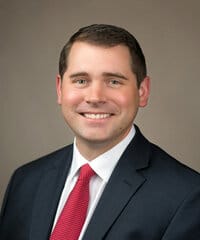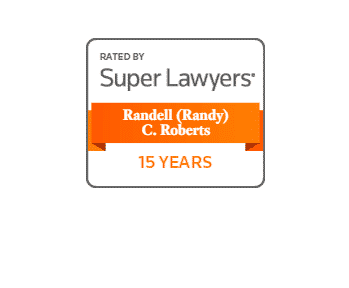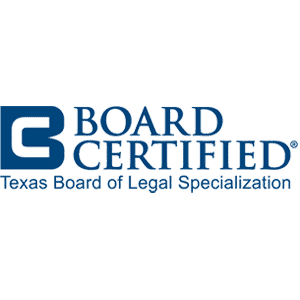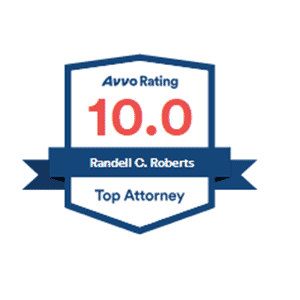May 18, 2023 - Car Accident by Justin Roberts
Back and spinal cord injuries are extremely common after car accidents. Even relatively minor collisions can cause strains, sprains, or even herniated discs. And because a healthy back is so important for pain-free mobility, an untreated back problem can have devastating consequences.
If you’re experiencing new or increased back pain after a car accident, it’s important to seek medical care and talk to an experienced personal injury lawyer as soon as possible. Back pain cases can quickly become complicated. Insurance companies frequently try to argue that your back or neck injury wasn’t actually caused by the car crash or isn’t as severe as you claim.
The lawyers and staff at Roberts & Roberts are here to help. Our car accident attorneys assist people in Tyler, Longview, all of East Texas and across the nation in car accident lawsuits involving back injuries. Contact us now at (903) 251-2873 or fill out our online form. The call costs you nothing … It could mean everything.
Common Types of Back Injuries from Car Crashes
Many different types of back injuries can occur as a result of an auto accident. When you are involved in a crash, the energy from the impact is transferred from the car to your body. The force of the impact can cause damage to your back, and your back can also be hurt by being forced into unnatural positions.
Some of the most common car accident injuries involving the back and spine include:
- Soft tissue injuries. “Soft tissue” refers to the ligaments, muscles, and tendons in the back. When these tissues are stretched or suffer a forceful impact, damage can occur. The most well-known soft tissue injury is whiplash, which causes neck pain, but the soft tissues of the back can be harmed in a car crash as well. This often results in significant pain that can be chronic.
- Lumbar strains. A lumbar strain occurs when the muscles or the tendons of the back are stretched beyond what is natural. Tendons are fibrous tissues that connect the bones and muscles. When the tendons or muscles are overly stretched, significant pain and impaired mobility can result.
- Lumbar sprains. A lumbar or back sprain occurs when the ligaments in the back stretch beyond what is natural. Ligaments are fibrous tissues connecting the bones to each other or to the joints. Like strains, sprains are also a form of soft tissue injury. Commonly, strains and sprains occur together.
- Compression fractures. Compression fractures are tiny cracks that develop in the bones of the spine. Eventually, these tiny cracks can cause the vertebrae to become deformed or collapsed. Symptoms can include difficulty breathing and significant pain. Approximately two-thirds of such fractures are not properly diagnosed.
- Lumbar spine injury. The lumbar spine is made of five vertebrae within the lower back. A car accident can break these bones in a variety of different ways. Compression fractures in the lumbar vertebrae are one type of fracture, but you may also experience an extension fracture, a flexicon fracture, or a rotation fracture. An extension fracture occurs when the vertebrae are pulled apart, which is common in a head-on crash. A flexicon fracture, on the other hand, involves the front of the vertebrae breaking and losing height, but the back part staying stable. Finally, a rotation fracture is rare and usually results from excessive bending.
- Thoracic spine injury. Thoracic fractures are fractures that occur in the mid-back. Like lumbar fractures, there are different types including flexicon, compression, extension and rotation fractures.
- Herniated discs. In the back, small and spongy discs cushion the bones of the vertebrae (the bones that make up the spine). A herniated disc occurs when a disc bulges or breaks. Herniated discs are also called slipped discs, ruptured discs or bulging discs. When a herniated disc puts pressure on the roots of the nerve, you may experience pain, numbness or weakness. Herniated discs can occur anywhere along the back.
- Spinal stenosis. This injury occurs when the spaces within the spinal column become narrowed, putting pressure on the nerves and the spinal cord. This can result in chronic pain, tingling and numbness, muscle weakness, and other symptoms.
- Spinal cord injury. Spinal cord injuries are among the most serious back injuries that result from car accidents. If nerves in the spinal cord are damaged, the result could be permanent changes in strength, sensation, and motor control to regions of the body below the injured nerves. A severe spinal cord injury could result in total or partial paralysis.
The treatment of back injuries vary, but could involve physical therapy, surgery, pain medications, muscle relaxants, chiropractic care, the use of adaptive devices, hospital stays and a whole host of other medical interventions. A back injury could require a lengthy recovery period, causing you to miss work or limit your duties. In some cases, a back injury may make it impossible for you to go back to the job you had prior to the accident.
What to Do If You Are Experiencing Back Pain After a Car Accident
If you are experiencing any new back pain symptoms after a car crash, you should do two things as soon as possible:
- Seek medical treatment
- Call a personal injury attorney for a free consultation
In the first few days after a crash, it’s not always immediately obvious whether you’ve sustained a serious back injury. Many back and neck injuries have delayed symptoms or could worsen over time if they aren’t identified and treated promptly.
Often, car accident victims will initially put up with severe back pain and delay going to see a doctor for days or even weeks after a back injury. They may be worried about the cost of seeing a doctor or hope that the problem will go away on its own.
The problem is that delaying evaluation and treatment not only means a worse medical outcome, but it also might make your legal case tougher to win. The insurance company representing the at-fault driver may try to argue that your delay means you aren’t really as hurt as you claim or that your back pain has nothing to do with the accident.
Proving a Back Injury Was Caused by a Car Accident Isn’t Always Easy
Back pain is an extremely common symptom, especially for middle-aged and older Americans. Most of the time, car accidents have nothing to do with it.
Unfortunately, insurance companies often use this fact to their advantage. If you were already experiencing back pain before the accident or have any previous back injury history, the insurance company will almost certainly bring it up as a reason to deny your claim.
Under Texas law, an insurance company can’t deny a claim because you were more susceptible to a back injury—this is called the “eggshell skull rule.” Furthermore, even if you already had back pain before the crash, you are still entitled to receive compensation for any new or aggravated symptoms that can be directly attributed to the crash.
However, in order to prove that any new or aggravated back pain is connected to the crash, you’ll likely need to provide substantial medical records and evidence, see the right specialists, and faithfully follow your treatment plan.
An Experienced Personal Injury Attorney Can Help You with Your Back Injury Car Accident Claim
A personal injury attorney is an invaluable resource that can help you get the care you need and the compensation you deserve. Your attorney can quickly get to work helping you in many ways, including:
- Thoroughly investigating the crash, including what happened, what caused it, and who is responsible. The sooner they can get started, the better they will be able to protect and preserve crucial evidence.
- Helping you get the medical care you need.
- Helping you secure a rental car and get your vehicle repaired.
- Collecting all your medical records, medical bills, and other information needed to prove the seriousness of your back injuries, tie them to the crash, and accurately calculate the damages you’re entitled to claim.
- Negotiating with the insurance company to secure a fair settlement.
- If necessary, filing a lawsuit and defending your legal rights in court.
After a back injury, you shouldn’t have to worry about the complex details of a pending legal case. Our personal injury attorneys work hard to make the process as simple and stress-free as possible, so that you can focus on your recovery and your family.
Contact Our Texas Back Injury Lawyers Today
The back injury lawyers at Roberts & Roberts can help you get the compensation you deserve for your back injury if someone else was to blame for the accident.
Most of the attorneys at Roberts & Roberts are board certified by the Texas Board of Legal Specialization in personal injury law or civil trial law. That means you will have a legal specialist at your side to help you with your claim.
Call us now at (903) 251-2873 or contact us online to schedule your free consultation with our legal team.
The content provided here is for informational purposes only and should not be construed as legal advice on any subject.
Justin is an attorney at Roberts & Roberts and focuses his practice on mass tort litigation, where he specializes in helping individuals who are harmed by recalled or unsafe pharmaceutical drugs and medical devices. He has earned recognition as a “Top 40 Under 40” Trial Lawyer by the National Trial Lawyers. Prior to joining Roberts & Roberts, Justin served as an attorney in all three branches of Texas’s state government, including as a Briefing Attorney on the Texas Supreme Court. He also represented electric and natural gas utilities in complex regulatory proceedings before the Public Utility Commission of Texas and the Railroad Commission of Texas. Justin is a published author in the St. Mary’s Law Journal.









